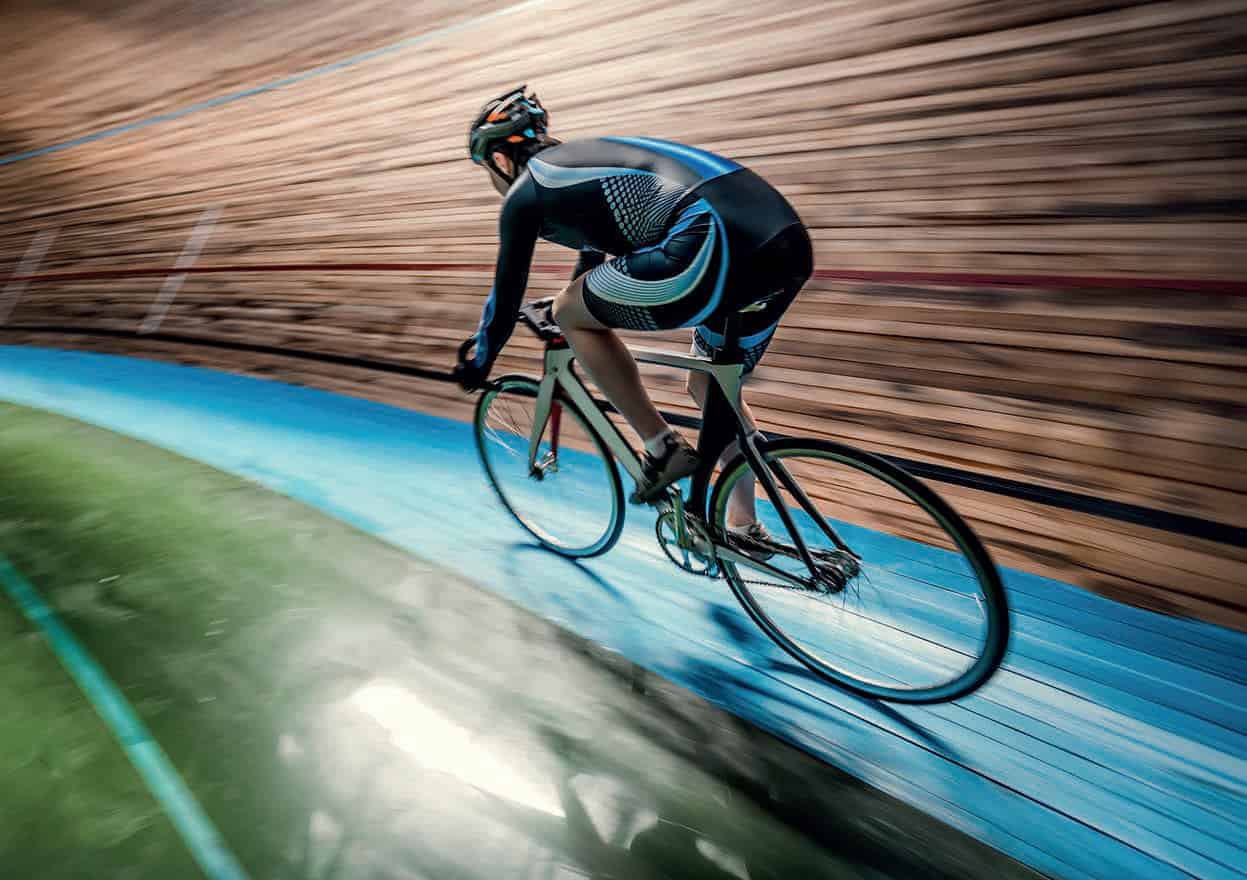Team GB had a sensational summer at the 2016 Rio Olympics, bringing home a total of 12 cycling medals, double that of any other nation. This success is not only down to having the best riders in the world, but also because they ride the best bikes in the world. Having the best equipment is necessary because other teams are constantly improving their bike technology. In a sport where medals can be decided by margins as little as 0.001 seconds, any fractional improvement can be the difference between winning and losing.
Engineering researchers at the University of Bristol have been working with Team GB to help produce the next generation of track bikes, using applied mathematics to determine which modifications could result in an improved performance. Central to their work is the equation which relates the power output of a rider with their speed*:
Power =
= Frontal area of rider and bike;
= Drag coefficient;
= Coefficient of rolling resistance
= Mass of rider and bike;
= Transmission efficiency;
= Air Density (fixed);
= Gravity (fixed);
= Speed (what the engineers want to maximise)
It is assumed that the power output of the rider cannot be altered – as most elite cyclists will already be producing their maximum power on the track. The engineers therefore looked to the right hand side of the equation to see which parameters could be adjusted up or down to lead to an increase in the speed ()
The team at the University of Bristol decided to investigate how the size of the chain, chainring and sprocket could affect performance. The received wisdom has always been to make these three components as small as possible thereby reducing the mass of the bike and the frontal area. The researchers made a discovery which turned this belief on its head, as they found that making the chain, chainring and sprocket much bigger actually increased track speeds. To understand why this is the case, we need to look again at the equation. Increasing the size of the chain, chainring and sprockets increases the mass () and also the frontal area (
) and changing these two parameters alone would have the negative effect of reducing the speed (
).
However the research team found that by increasing the size of these components, what is known as the transmission efficiency () was also increased. The transmission efficiency is a measure of how much power is lost when transmitting power from the pedals to the rear wheel. Increasing the sprocket diameter increases transmission efficiency mainly because the tension in the chain decreases, thus reducing friction forces in the chain. Dividing by a bigger transmission efficiency meant that overall the speed (
) increased. Team GB cyclists went on to use the new bikes at Rio 2016 – breaking two world records and proving their worth on the track.
FInd out more – www.bristol.ac.uk/engineering
*Note that this equation is for straight, level cycling with no wind and no acceleration
Download a PDF of this article






